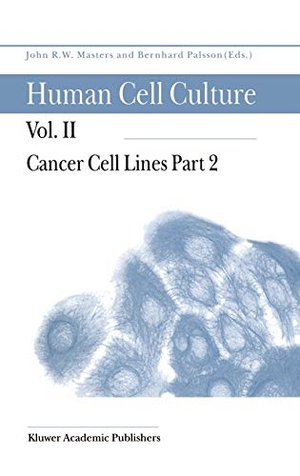
Cancer Cell Lines Part 2
- Springer Netherlands
- 1999
- Gebunden
- 396 Seiten
- ISBN 9780792358787
Continuous cell lines derived from human cancers are the mostwidely used resource in laboratory-based cancer research. The first 3 volumes of this series on Human Cell Culture are devoted to these cancer cell lines. The chapters in these first 3 volumes have a common aim. Their purpose is to address 3 questions offundamental importance to the relevanceof human cancer cell lines as model systems of each type of cancer: 1. Do the cell lines available accurately represent the clinical presentation? 2. Do the cell lines accurately represent the histopathology of the original tumors? 3. Do the cell lines accurately represent the molecular genetics of this type
Mehr
Weniger
zzgl. Versand
in Kürze